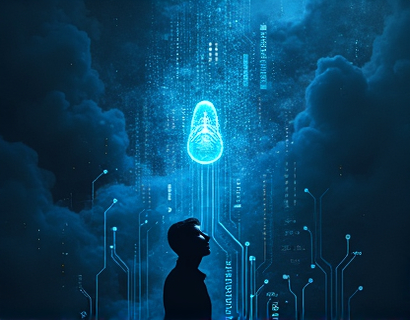AI-Driven Personalized Learning: Transforming Education for Students and Lifelong Learners
In the rapidly evolving landscape of education, the integration of Artificial Intelligence (AI) has emerged as a transformative force, particularly in the realm of personalized learning. This approach leverages AI to create adaptive, interactive experiences tailored to the unique needs, styles, and paces of individual learners. The goal is to maximize each student's potential and support lifelong learners in achieving their goals, regardless of their background or current level of knowledge.
The traditional one-size-fits-all model of education often fails to address the diverse learning requirements of students. Every learner has distinct strengths, weaknesses, preferences, and learning speeds. AI-driven personalized learning addresses these challenges by providing customized educational paths that adapt in real-time based on the learner's performance and feedback. This not only enhances the learning experience but also improves outcomes by ensuring that each student receives the support they need when they need it.
Adaptive Learning Systems
At the core of AI-driven personalized learning are adaptive learning systems. These systems use algorithms to analyze vast amounts of data on student interactions, performance, and progress. By continuously assessing this data, the system can identify patterns and adjust the learning content accordingly. For instance, if a student is struggling with a particular concept, the system can provide additional resources, such as videos, interactive exercises, or detailed explanations, to reinforce understanding.
Adaptive learning systems also consider the learner's pace. Some students may grasp concepts quickly and require more challenging material, while others may need more time to absorb information. The AI adjusts the difficulty level and pacing of the content to match the individual's learning speed, ensuring that no student is left behind or bored by material that is too easy.
Personalized Learning Paths
One of the most significant advantages of AI-driven personalized learning is the creation of personalized learning paths. These paths are dynamically generated based on the learner's goals, prior knowledge, and learning preferences. For example, a student aiming to become proficient in a new language can follow a tailored curriculum that starts with basic vocabulary and grammar, gradually introducing more complex structures and conversational skills.
Personalized learning paths also incorporate the learner's interests and real-world applications. By making the content relevant and engaging, students are more likely to stay motivated and committed to their learning journey. This approach is particularly beneficial for lifelong learners who may have specific professional or personal goals they wish to achieve through education.
Instant Feedback and Support
AI-driven platforms provide instant feedback, which is crucial for effective learning. Unlike traditional classrooms where feedback may be delayed, AI can immediately assess a student's responses and provide constructive feedback. This real-time feedback helps students understand their mistakes and learn from them promptly, reinforcing correct concepts and addressing misunderstandings before they solidify.
Beyond feedback, AI offers continuous support through virtual tutors and chatbots. These tools can answer questions, guide students through difficult topics, and offer encouragement. The supportive environment created by these AI assistants helps build confidence and reduces the anxiety often associated with learning new material.
Interactive and Engaging Experiences
Interactivity is a key component of AI-driven personalized learning. Traditional educational methods often rely on passive consumption of information, but AI transforms this by creating interactive experiences that engage multiple senses and learning styles. For visual learners, the platform might include infographics, videos, and interactive diagrams. For kinesthetic learners, simulations and virtual labs can provide hands-on experiences.
Gamification elements, such as points, badges, and leaderboards, are also integrated to make learning more enjoyable and competitive. These elements tap into the natural human desire for achievement and recognition, further motivating students to engage deeply with the material.
Supporting Diverse Learning Styles
Every learner has a unique combination of learning preferences, often categorized as visual, auditory, reading/writing, or kinesthetic. AI-driven personalized learning platforms are designed to accommodate these diverse styles. By analyzing a student's interactions and performance, the system can identify their primary learning style and adapt the content accordingly.
For instance, a visual learner might receive more images, videos, and charts, while an auditory learner might benefit from audio lectures and podcasts. This customization ensures that each student receives information in the most effective way for their learning style, enhancing comprehension and retention.
Lifelong Learning and Professional Development
The benefits of AI-driven personalized learning extend beyond traditional schooling to lifelong learning and professional development. In today's fast-paced world, continuous learning is essential for career advancement and personal growth. AI platforms can support individuals in acquiring new skills, updating existing knowledge, and staying competitive in their fields.
For professionals, the platform can offer targeted courses and modules that align with industry trends and job requirements. Whether it's learning a new programming language, mastering a software tool, or understanding emerging technologies, AI can provide a flexible and efficient learning path. This not only helps individuals stay current but also opens up new opportunities for career growth and innovation.
Enhancing Teacher-Student Interaction
AI-driven personalized learning does not replace teachers but rather enhances their role. Teachers can leverage AI tools to gain deeper insights into each student's progress, identifying areas where additional support is needed. This data-driven approach allows teachers to focus their efforts more effectively, providing targeted interventions and personalized guidance.
Moreover, AI can assist teachers in creating and managing personalized learning plans, automating administrative tasks, and facilitating communication with students and parents. This frees up valuable time for teachers to focus on what they do best: fostering a supportive and engaging learning environment.
Challenges and Considerations
While AI-driven personalized learning offers numerous benefits, it is essential to address potential challenges and considerations. Data privacy and security are paramount, as sensitive student information must be protected. Transparent data usage policies and robust security measures are necessary to build trust and ensure compliance with regulations.
Another consideration is the digital divide, where not all students have equal access to the technology required for AI-driven learning. Efforts must be made to bridge this gap, ensuring that personalized learning is accessible to all, regardless of socioeconomic background. Additionally, while AI can provide valuable support, it should complement rather than replace human interaction and emotional support in education.
Future Prospects
The future of AI-driven personalized learning is promising, with ongoing advancements in AI technology and increasing adoption in educational institutions. As AI algorithms become more sophisticated, the ability to predict and adapt to student needs will improve, leading to even more effective and personalized learning experiences.
Integration with other emerging technologies, such as virtual reality (VR) and augmented reality (AR), can further enhance the immersive and interactive nature of learning. These technologies can create realistic simulations and environments that make learning more engaging and memorable.
In conclusion, AI-driven personalized learning represents a significant leap forward in education, offering tailored, adaptive, and interactive experiences that cater to the unique needs of each learner. By leveraging the power of AI, we can create a more inclusive, effective, and engaging educational landscape that supports students and lifelong learners in achieving their full potential.










































